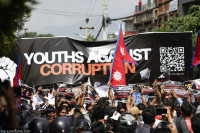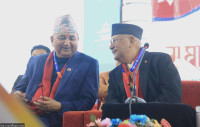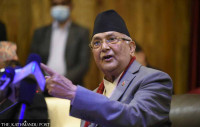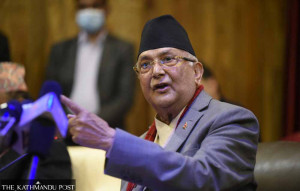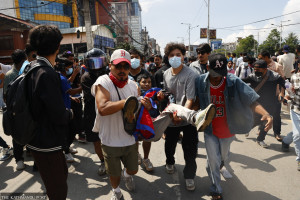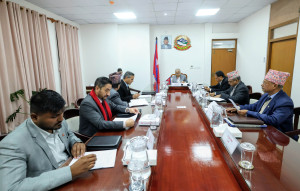Editorial
Getting out of hand
Left unchecked, the cycle of misinformation and disinformation online will only get worse.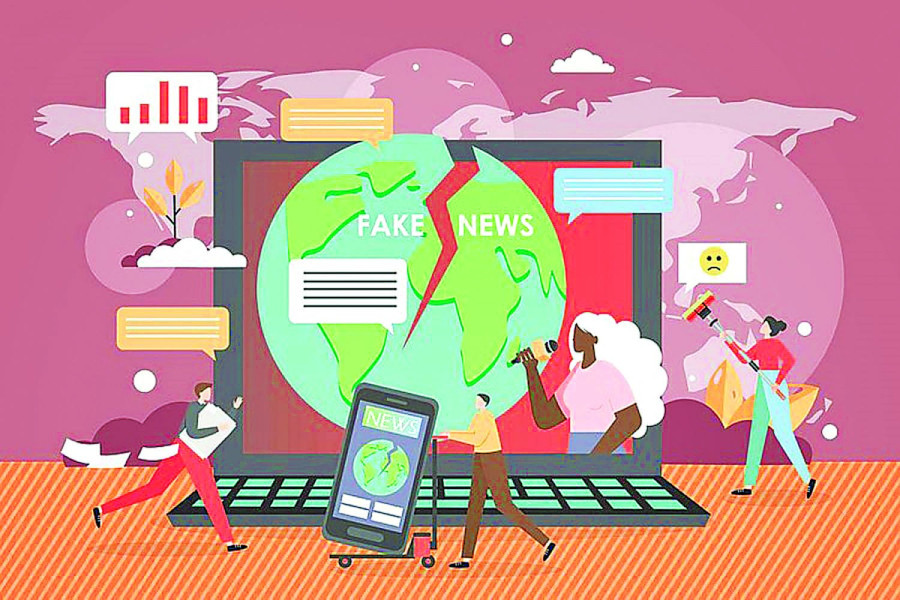
On September 9, Cyabra, an Israel-based AI-powered platform, published a report claiming that fake accounts had a big impact on the Gen Z protests. Based on the report and without much effort put into checking its credibility and methodology, some media outlets rushed to speculate that the movement was organised by behind-the-scenes forces, even suggesting the presence of foreign actors in the movement. Likewise, in the past few days, the acronym ‘TOB’ has been making the rounds of social media after photos were shared showing young men donning T-shirts with the letters in the protests, spawning speculations about its meaning. One thing led to another, and the situation quickly escalated as curiosity devolved into disinformation, radicalised narratives, and xenophobic attacks, with some users issuing death threats against Nepalis of Tibetan origin.
On Sunday, a two-page minute of a meeting, supposedly signed by several key leaders of the Gen Z movement, surfaced on social media, whereby they had demanded several key ministerial appointments. Again, people were quick to respond and engage with it. They loathed the decision of the young leaders to put themselves forward as ministers, drawing parallels with the power-hungry leaders of traditional parties. The document turned out to be a hoax.
The global cyberspace is rife with misinformation and disinformation. Social media helps bring people close, but also rapidly spreads unverified and unsubstantiated content. In fact, false news stories spread faster than true ones. While 41 percent of Nepal’s population used social media as per a 2023 report, many still lack basic media literacy, consuming information on social media without any critical analysis of the content.
Nepal’s cyberspace has been even more volatile since the Gen Z movement, with polarising opinions and unsubstantiated information making the rounds on social media platforms. At this critical juncture in the country’s history, disinformation and misinformation do not simply derail online discussions; they compromise the country’s interests by promoting conspiracy theories of all kinds. The government has a critical role in the fight against disinformation and misinformation. For one, in consultations with relevant stakeholders, it must draft a national policy on how to tackle the problem—and quickly.
Another simple but effective solution-oriented approach is improving people’s media literacy. For this, there must be programmes aimed at increasing awareness on misinformation. Social media users also have a role to play. A responsible use of the online platforms entails flagging dubious information whenever they are exposed to such content. Despite high levels of global concern, a 2023 UNESCO survey disclosed that only 48 percent of users flagged such content. More users need to report disinformation and misinformation whenever they come across dubious content.
The fight against disinformation and misinformation online isn’t easy. There could be an exponential increase in such information in the lead up to the March 5 elections, as different political groups look to discredit one another—or to take advantage of the volatile situation. This is why it is important to act quickly. Left unchecked, there is no telling how dangerous this cycle of misinformation and disinformation will get in the months and years ahead.




 21.12°C Kathmandu
21.12°C Kathmandu